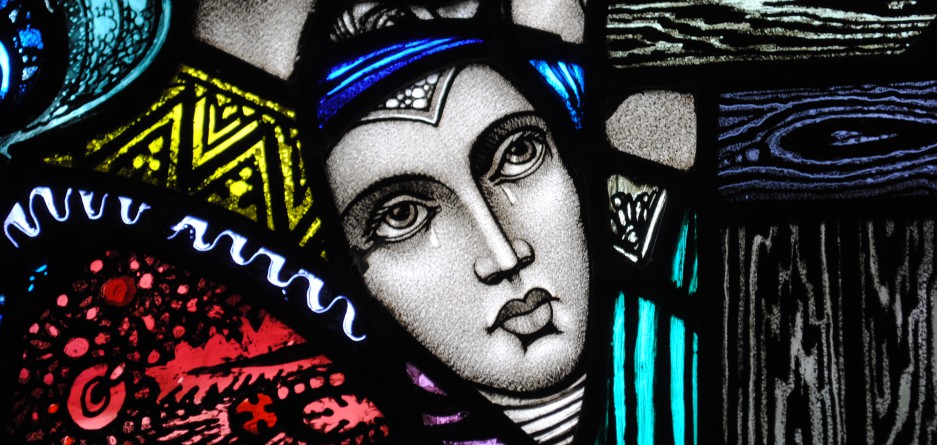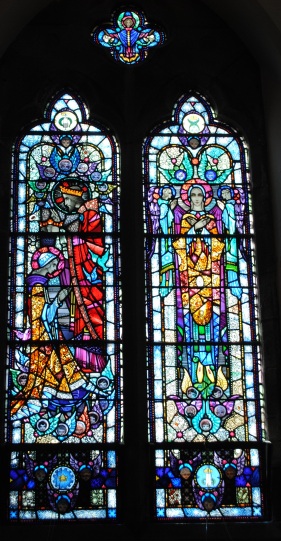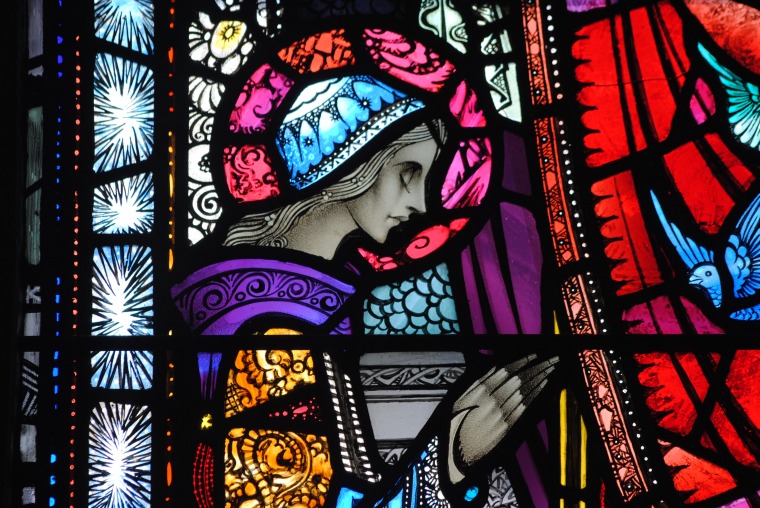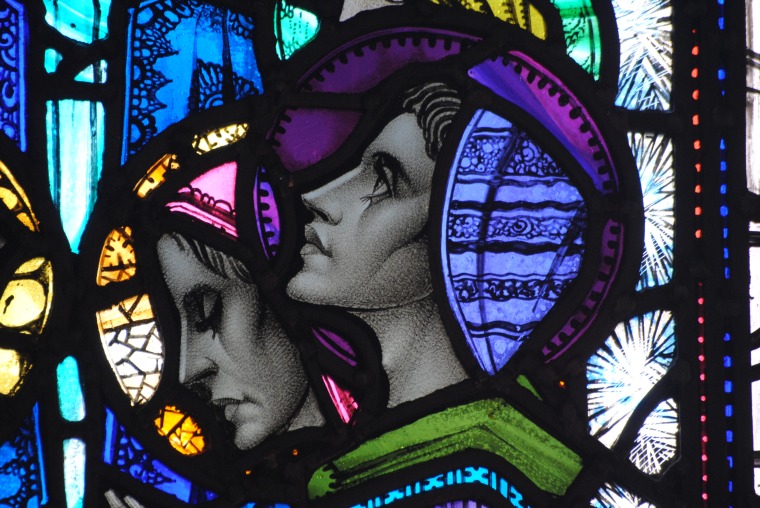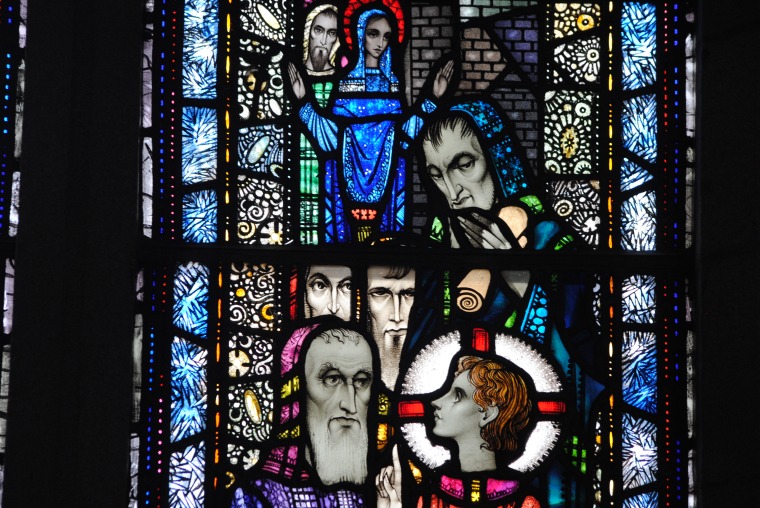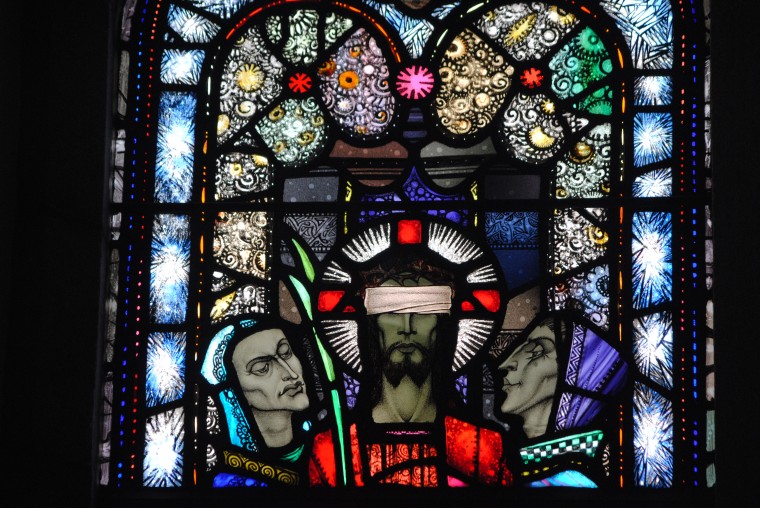In June 1943 the Studios received an order to ‘make, supply and fix’ a Rose Stained Glass window for the Church of the Most Holy Rosary, Kilcoe, County Cork. The church is in Aughadown parish and is situated on the road between Ballydehob and Skibbereen close to Roaringwater Bay. The window, which cost £120, was commissioned by Very Rev. Florence McCarthy PP.
Following his ordination in Maynooth in 1897, Father McCarthy was appointed to ministry in Glasgow where he spent eight years before returning to his native Cork. He then managed Baltimore Fishery School for nine years before returning to parish life, first as curate and then Administrator in Skibbereen parish. In 1926 he was appointed as Parish Priest of Aughadown parish, a position he held until his death in 1963.*
The subject chosen for the window was the Virgin and Child surrounded by scenes from the Life of Mary. It was designed by Terence Clarke, son of Walter Clarke and nephew of Harry.
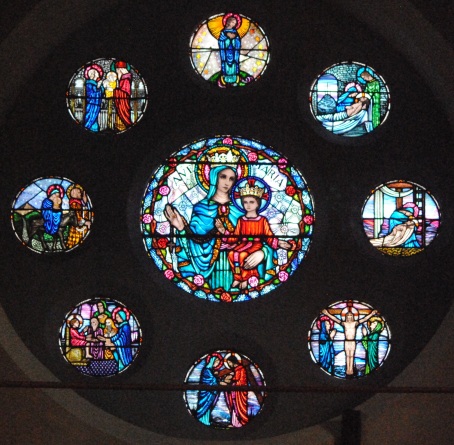
The central panel depicts Mary as Queen of Heaven holding Jesus on her arm. They are surrounded by roses and other floral ornamentation. The rose, known as the queen of flowers, has a strong significance in the Christian tradition. It is used to represent both Mary’s importance as Queen of Heaven and also her purity. In their hands the figures are holding the Rosary which is associated with devotion to Mary through offering prayers while meditating on the life of Jesus and Mary.
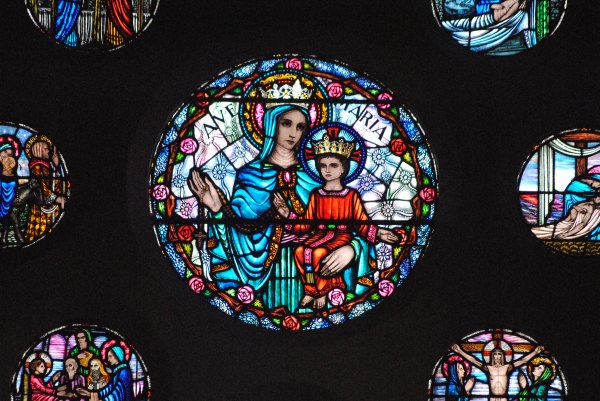
Surrounding the central panel are eight smaller panels depicting episodes from the life of Mary – the Immaculate Conception, the Deposition, Lamentation, Mary at the Cross, Christ meets His Mother, Finding in the Temple, Flight to Egypt and the Presentation of Our Lord.
The Immaculate Conception is placed in the top section. It is a typical rendition with Mary surrounded by stars, standing on a crescent moon and crushing a serpent. Her gaze is directed towards the panel containing the Deposition, where Christ’s body is held by His grieving mother prior to being laid into the tomb.
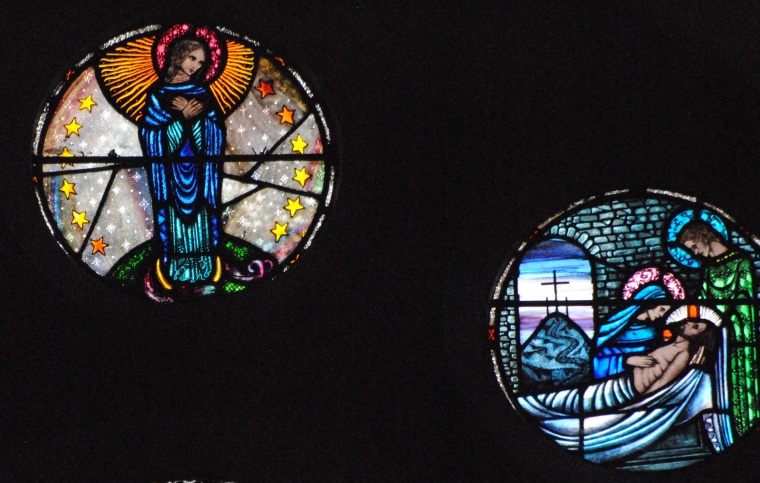
Immaculate Conception and Deposition
On the left side the centre panel depicts the scene where Jesus is found by Mary in discussion with the Doctors of the Temple in Jerusalem. Jesus had been left behind when his parents returned home after a pilgrimage to the Holy City and was found three days later when they returned to look for him.
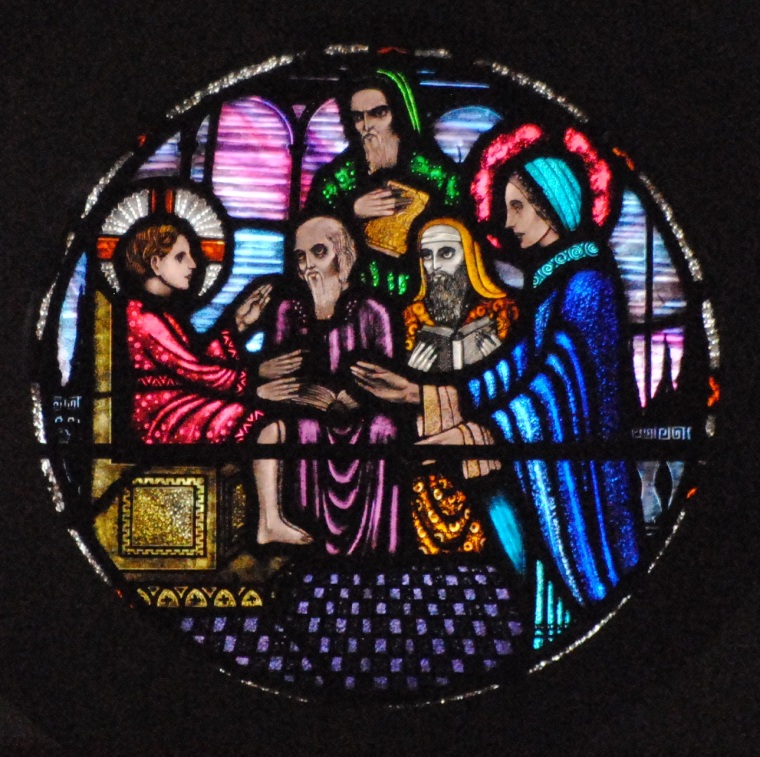
Finding in the Temple
The Flight to Egypt contains a number of interesting features – a long winding road, a pyramid, a placid donkey led by the resolute-looking Joseph and a beautiful starlit sky.
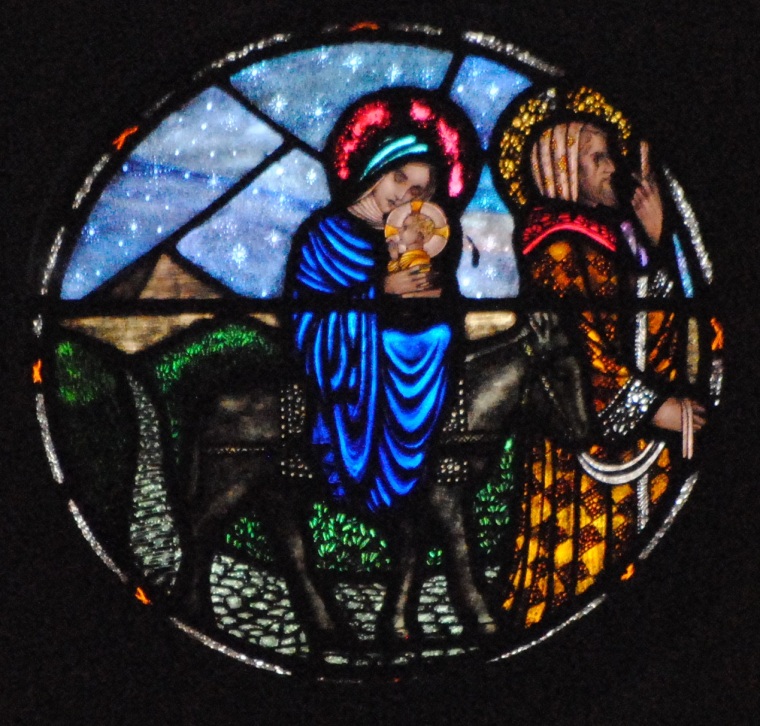
Flight to Egypt
So the next time you are near Skibbereen or Ballydehob call in to this wonderfully elegant church to appreciate its interior and perhaps to take some time for reflection or prayer.
*From the Diocese of Cork and Ross website, http://www.corkandross.org/
